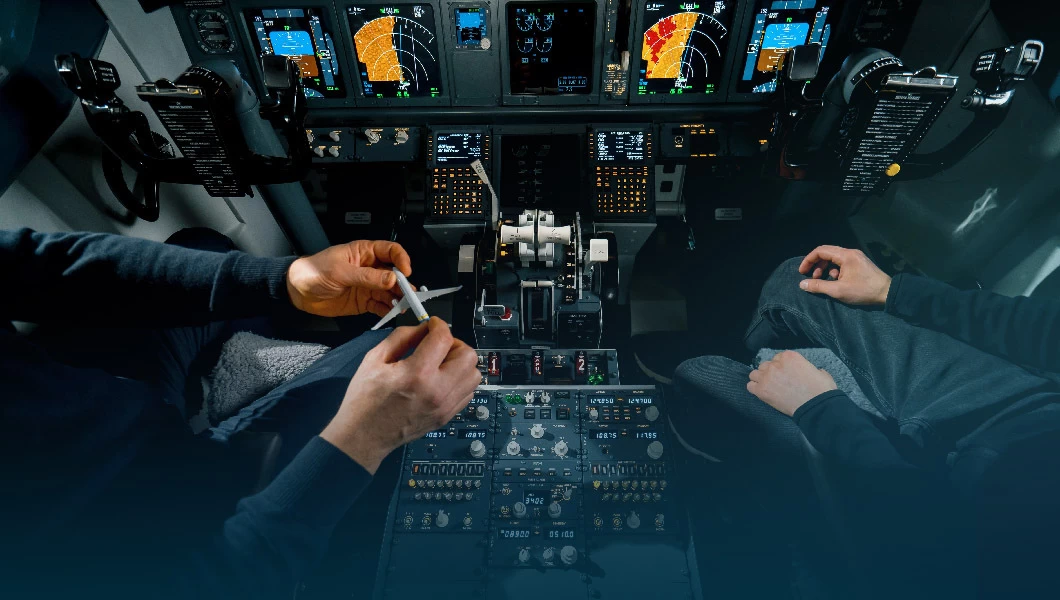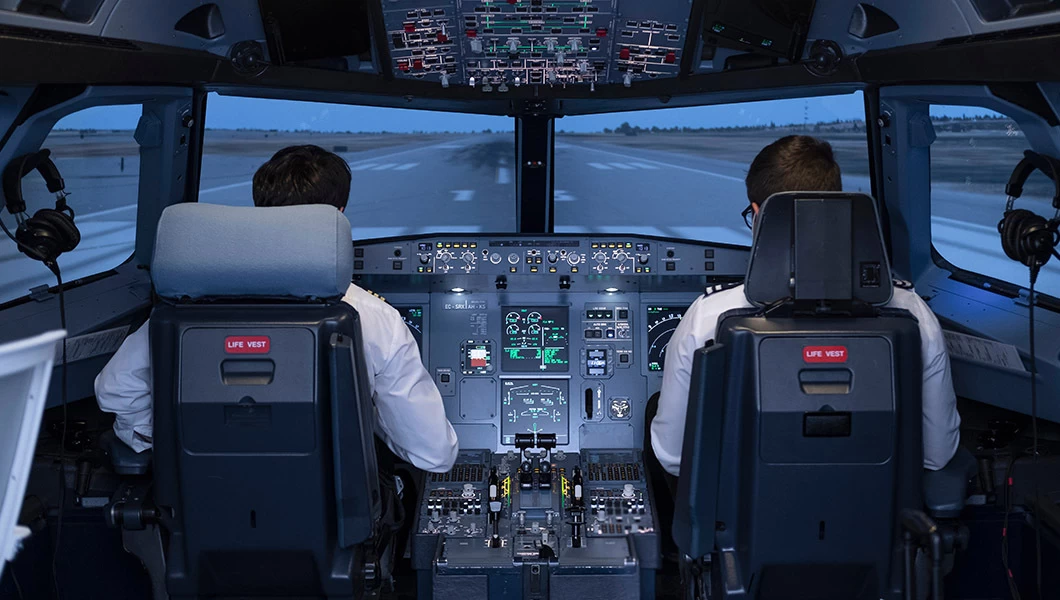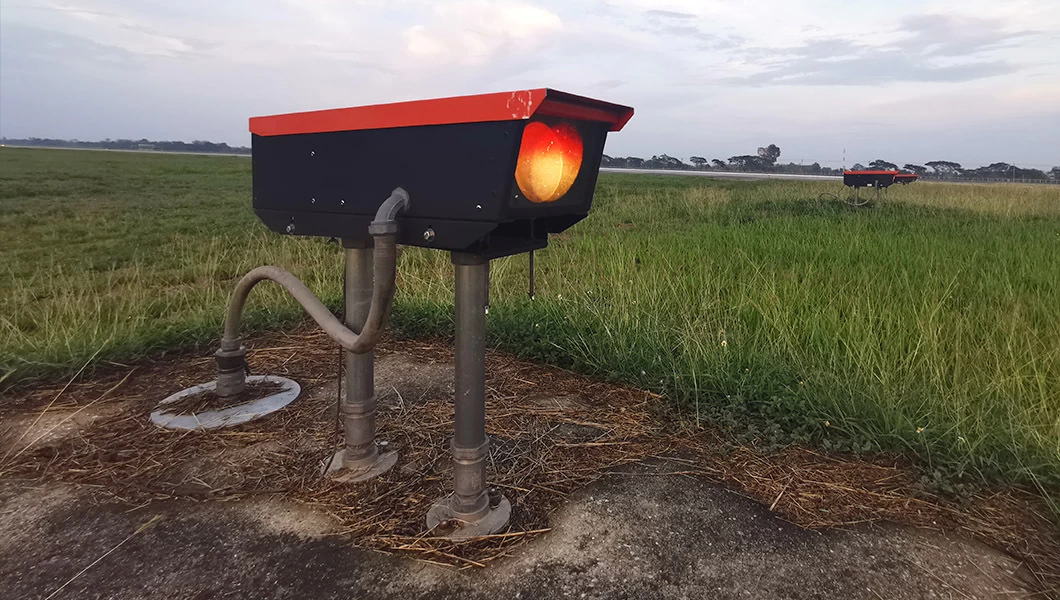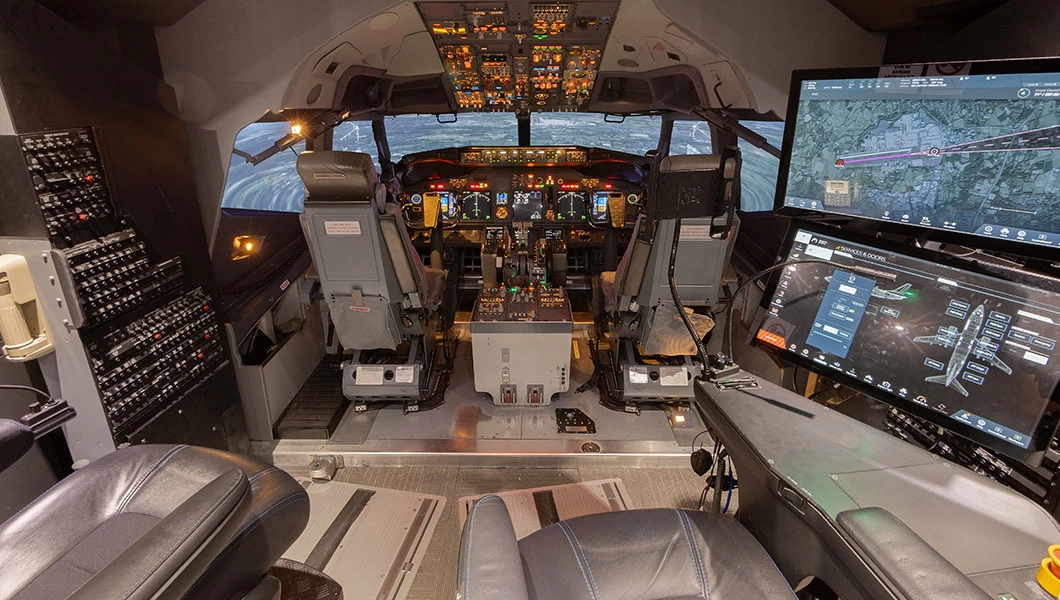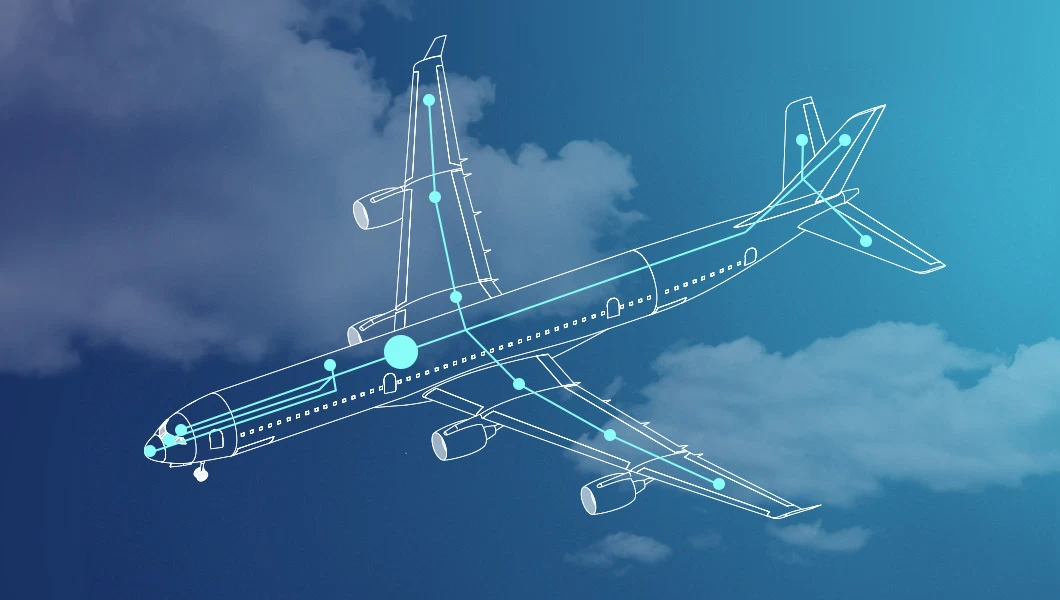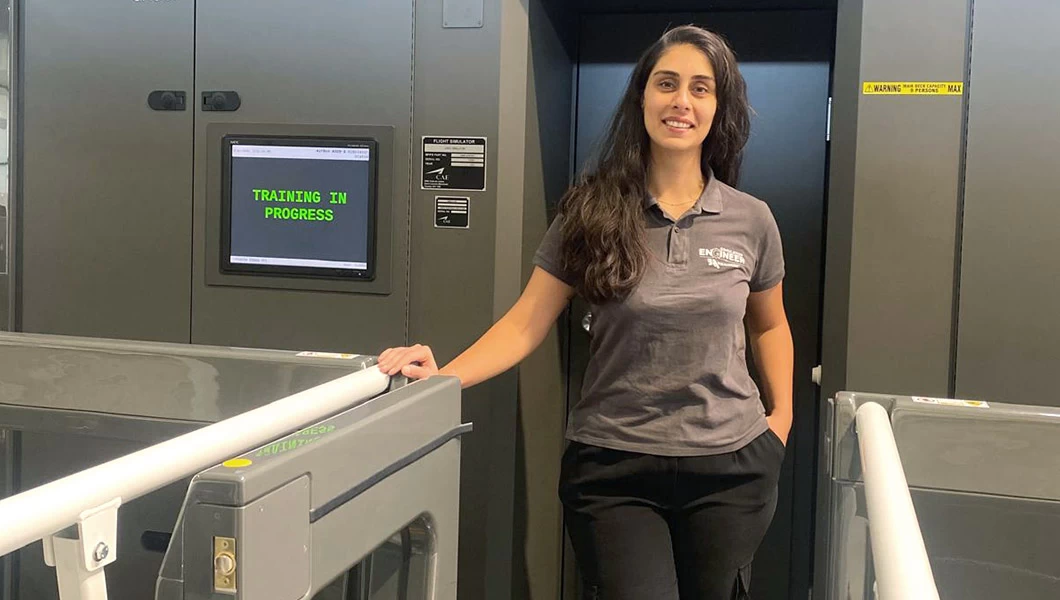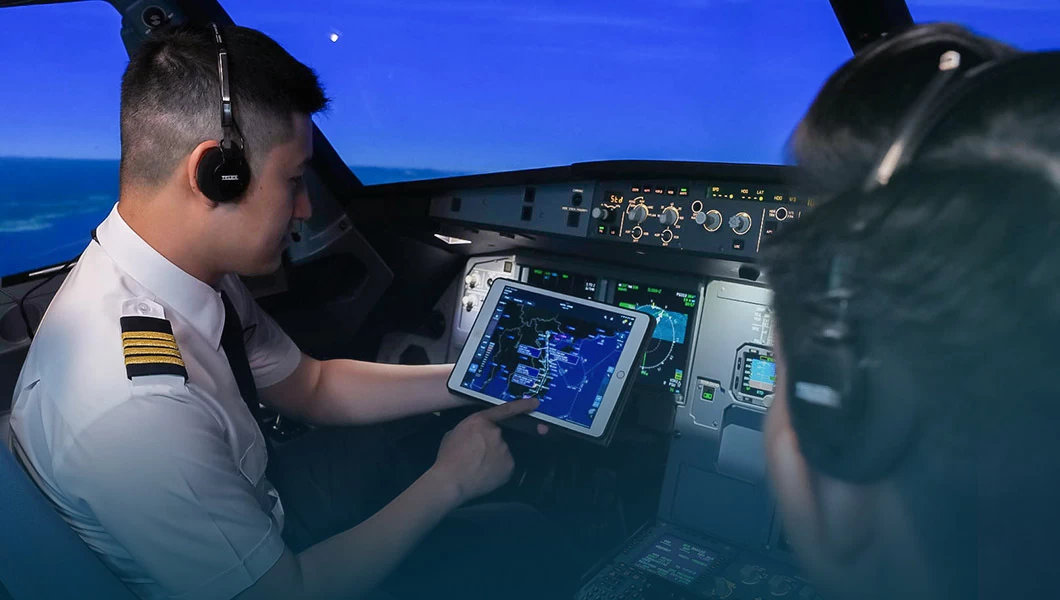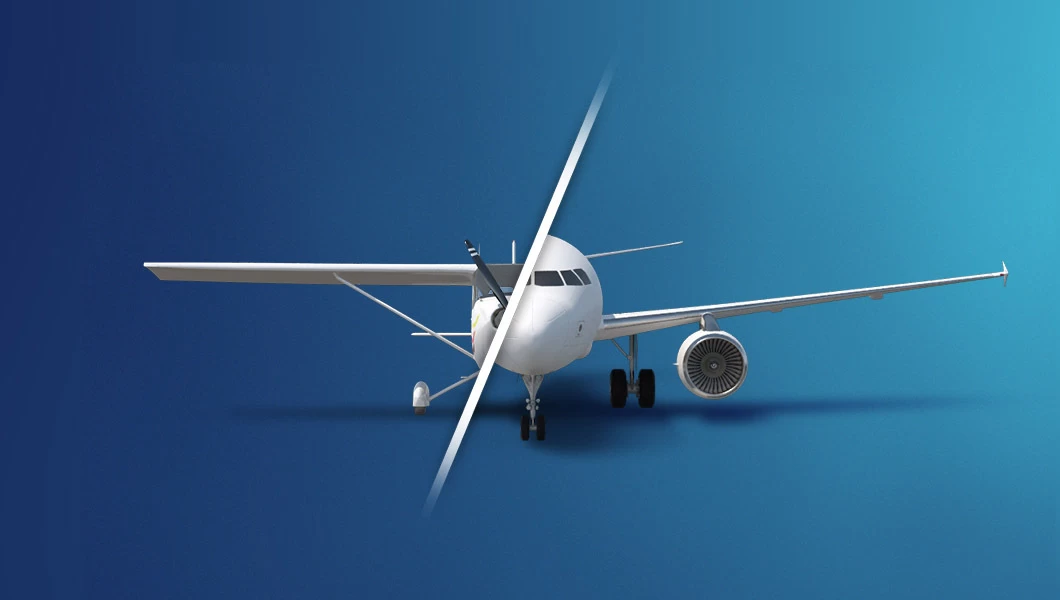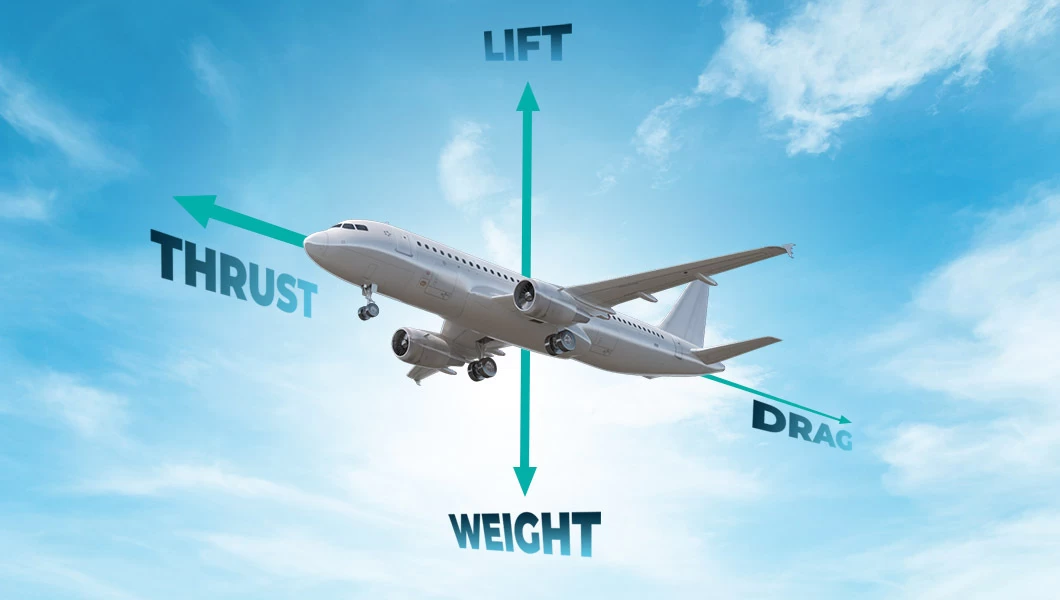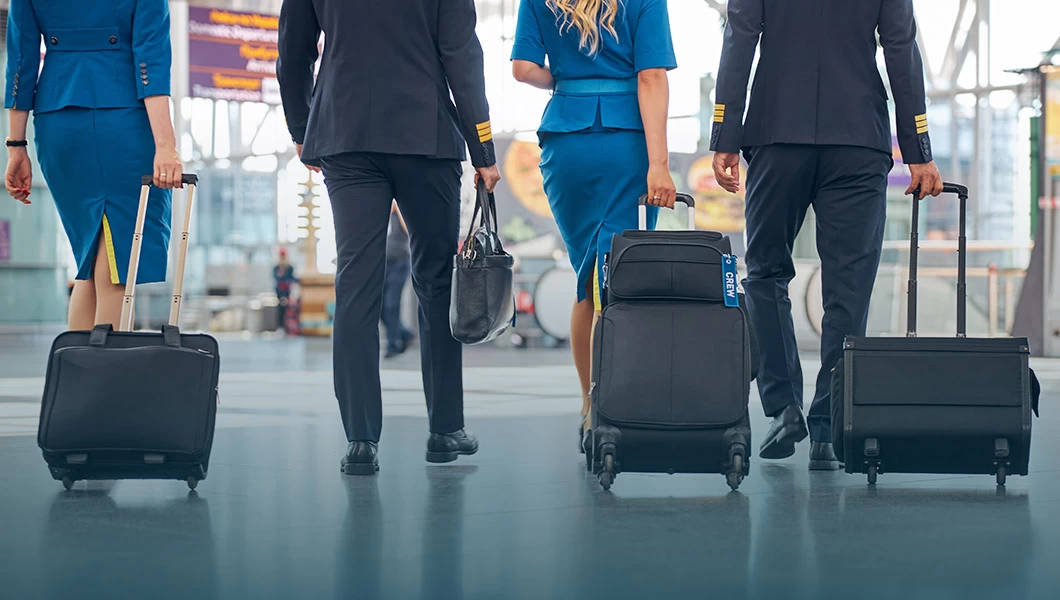You probably already know which side we are on, based on these few questions. Becoming an airline pilot offers countless benefits, and we’re here to guide you on why it is worth becoming an airline pilot. Let us draw your attention to our top 10 strongest arguments.
1. Tech-savvy nature of the job
Imagine how awesome it is to find yourself in a cockpit surrounded by hundreds of buttons, switches, and displays and realize you manage it all to guide this machine through the sky! This profession keeps you on your toes, pushing the boundaries of skill and expertise, while filling your heart with excitement about cutting-edge technology every time you fly.

2. High and steadily growing salaries
In both the USA and Europe, the profession of airline and commercial pilots ranks among the highest-paying careers, alongside medical specialists such as surgeons and anesthesiologists.
So, how much do pilots earn? According to Payscale, in 2024, First Officers in Europe earn between €51k and €97k (median salary of €74k), marking a 27.58% increase from the previous year. In the USA, the salaries for airline and commercial pilots rose even more, with a 52.53% increase, offering between $56k and $185k (median salary of €120.5k) for the position.
Are these figures the ceiling? Definitely not. Salaries directly depend on the global demand for pilots, which is skyrocketing. If the demand continues to grow, so will the salaries.
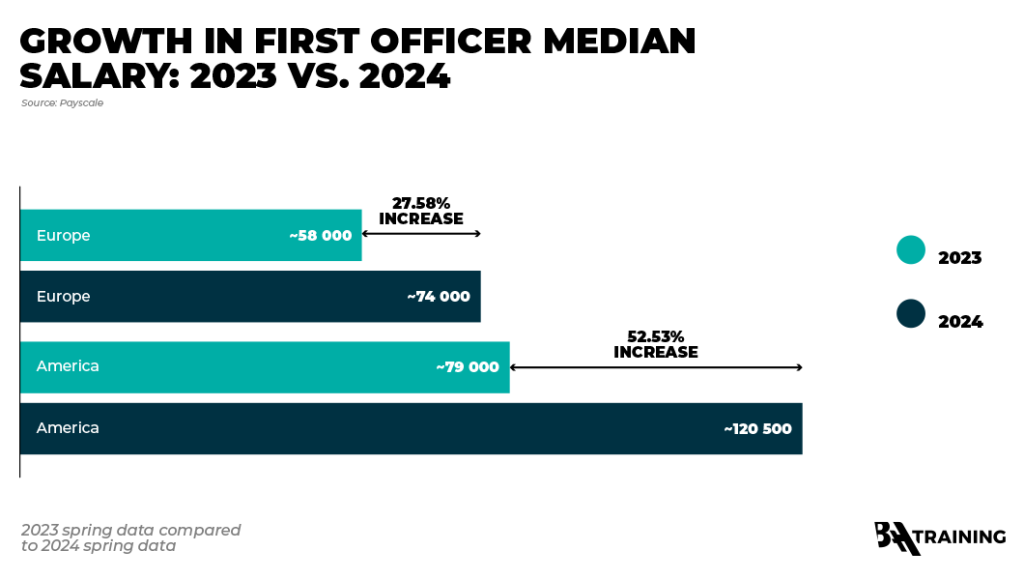
3. Airline pilot: An in-demand profession
So, is it worth becoming a pilot in 2024? Will the profession be in-demand in 20 years? The short answer is ‘yes’, and here is why.
After the pandemic, air travel has recovered considerably, with traffic reaching 94.1% of pre-pandemic levels in the full year of 2023. However, the industry is facing a shortage of pilots to meet the increased demand, and the current pilot shortage is anticipated to become more severe in the coming years. According to Boeing’s projections, the global demand for new pilots is expected to reach 602,000 by 2041. In Europe alone, the pilot shortage equals 122,000 new pilots.
To address this, the role of flight instructors has become crucial. There is a growing demand for Certified Flight Instructors (CFIs) to train new pilots, helping graduates accumulate flight hours and meet FAA and EASA requirements before advancing to airline careers.
During the Dubai Airshow held in November 2023, Airbus and Boeing received a combined total order for 381 aircraft from different carriers. Considering that a minimum of 10 pilots are needed to operate one aircraft, the number automatically translates into the need for at least 3,810 new pilots. And this is the outcome of just one event… You see the logic.
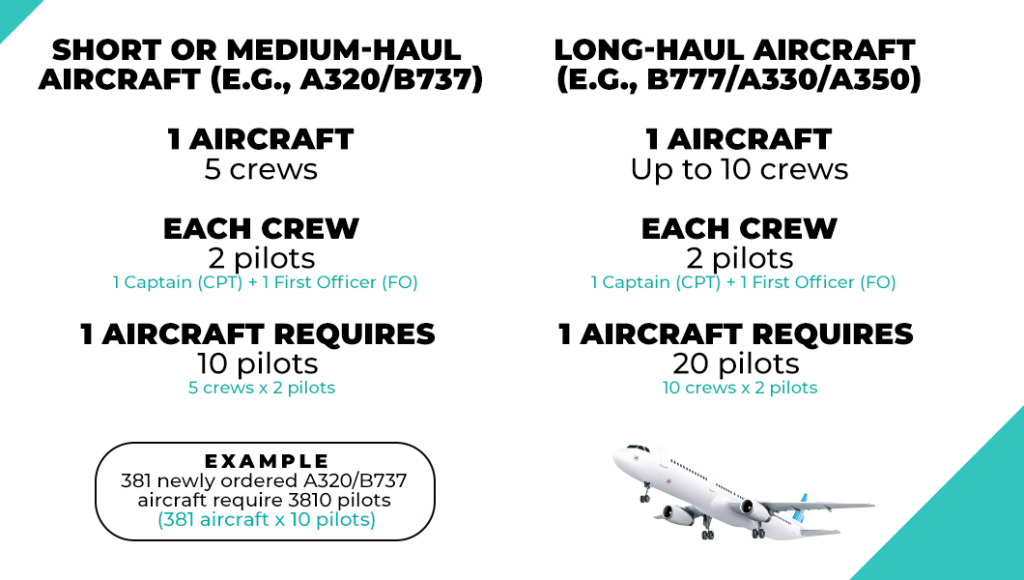
4. Perks accompanying the salary
You might have heard of such benefits included in the package as travel discounts, free tickets for family and friends, or health insurance. These are pretty standard, and you will hardly find an airline that does not offer them. But what will you say about accommodation costs coverage? Or options for flexible or rotating schedules, allowing commercial pilots to maintain a better work-life balance? Monthly inflation coverage? According to our recently published market research on pilot position requirements and benefits, ACMI, charter, and cargo airlines are the most generous in this regard, offering a wider variety of benefits than legacy or other airlines.
5. Not a Monday-to-Friday job
Although the pilot’s job is often associated with little time at home and the absence of a personal life, it’s not entirely like that! Many pilots have found a good balance between their professional and personal lives. Instead of working from nine to five, Monday to Friday, they have a more varied work schedule and will be able to plan their gatherings with family and friends accordingly. Just think about it—an office worker gets, on average, eight days off per month, while an average airline pilot, with around 15 days off per month, has nearly twice as much time off. Also, according to EASA regulations, the flight time per month cannot exceed 100 hours, which is strictly regulated.
6. Financing for commercial pilot license becomes more achievable
The accelerated demand for pilots these days urges airlines to start pre-financing pilot training for aspiring pilots, a scenario that has typically been considered uncommon in the market until now. For example, Luxembourg’s flag carrier, Luxair, has pre-financed training for selected student pilots who have been sent for initial training to BAA Training at Lleida-Alguaire (some of the students in the photo below are Luxair’s pilots).
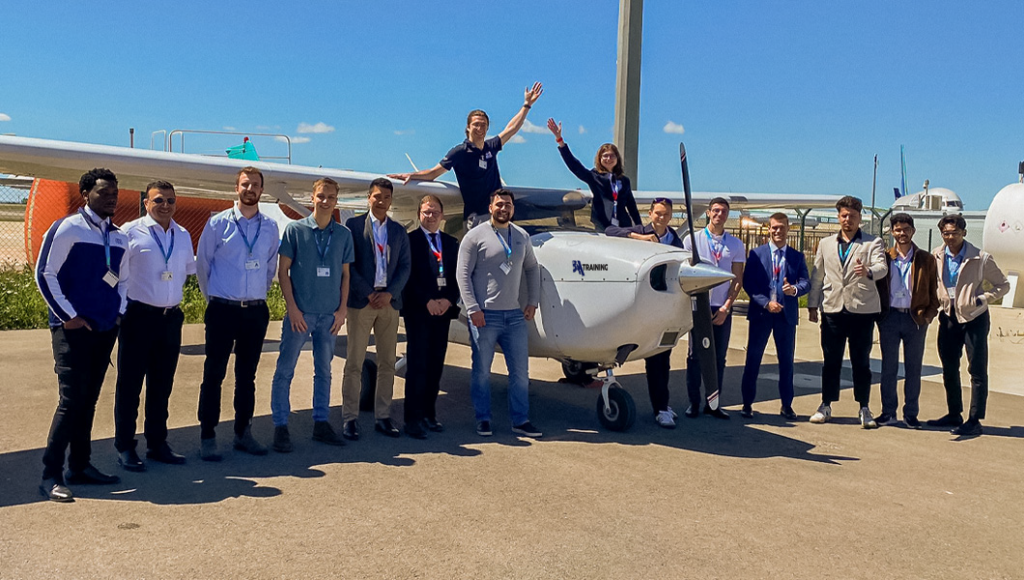
Another example is a recently launched ‘Pilot Runway’ program that leads to an MPL license achievement. BAA Training, in partnership with the ACMI and charter airlines Avion Express and AirExplore, is set on jump-starting a pilot career for those who aspire to become pilots. Not only do these airlines offer a loan to cover the majority of their training costs, but they also provide a job guarantee even before the training starts.
In addition, a standard way of securing financing for pilot training remains: through a bank loan. Notably, since pilots typically have a higher earning potential than many other professions, pilot training loans are often considered safer student loan options. This is because the higher pilot incomes allow them to repay their training loans quickly.
7. Diverse career paths available
If ‘life happens’ and regular flying no longer fits into your preferred routines, a pilot can transition to a different role in the aviation industry. Alternatively, they can combine this role with flying for an airline or go for it after retirement. For example, they might pursue opportunities such as becoming a Head of Training at an approved aviation training organization (ATO), working as a certified flight instructor at an atp flight school, or transitioning into management or other specialized positions. After meeting the commercial pilot requirements, obtaining a flight instructor certificate allows pilots to earn a living flying while also gaining the necessary flight experience for airlines. In short, a pilot’s flight experience and expertise will always find its use.
Your PILOT CAREER
starts with a first click
8. Lifelong learning and skill development at flight school
Pilots never stop refining their skills and learning, and it’s understandable, given their responsibility for the safety of passengers and crew. Sometimes, they even get to learn something completely new, like obtaining a new Type Rating, which can be a game-changer. When airlines purchase new planes, they often cover the cost for their pilots to undergo training on them. This helps pilots advance in their careers, learn new skills, and stay updated on the latest technology.
9. Meet new people and… make friends!
During layovers in foreign destinations or through collaborative projects with international airlines, pilots frequently interact with colleagues from diverse backgrounds, cultures, and nationalities. This exposure to different perspectives enriches their professional experience, broadens their understanding of global aviation practices, and, of course, enhances their career prospects. The power of networking often proves to be effective at the least expected moment!

In addition, pilots at the same base often develop a strong bond similar to that of a family, and this connection is extremely valuable. They share experiences, celebrate successes, and provide support during challenging times, forming a tight-knit community. Having someone to rely on not for both work-related matters and personal support is very precious.
10. Keen purpose of the job
Another argument is the purpose of this job, which is, in fact, very keen. A pilot is a person who gets people from one place to another safely and smoothly. For instance, commercial airline pilots can make sure people can hop on a plane and go see grandma or explore some exotic location (by the way, let’s not forget you can do it as a pilot, too!). Isn’t it fantastic? It’s like being a superhero but with a pilot’s hat instead of a cape.
Conclusion
Whether to be a commercial airline pilot or not comes down to an individual choice.
Obtaining a student pilot certificate is the first step towards this exciting career, setting the foundation for further training and certifications. To legally be paid to fly, pilots must earn a commercial pilot certificate, which sets specific requirements and standards. Starting your career with a regional airline can be a valuable stepping stone, offering essential experience and a pathway to opportunities with major airlines. Becoming a private pilot first and then seeking a commercial pilot career is another way to embark on this rewarding career path. Obtaining a private pilot certificate is crucial as it lays the foundation for all future aviation training and is the first milestone in becoming a commercial pilot.
Flying commercially certainly requires a lot of effort, motivation, management, and bravery. But those who have tried it once can’t imagine their life without the magnificent views through the ‘office’ window. Contact BAA Training, and we will consult you regarding the start of your flight training, fees, financing, and employment opportunities. You can have your long-wished-for commercial pilot license and become a pilot in as little as 16 months!


